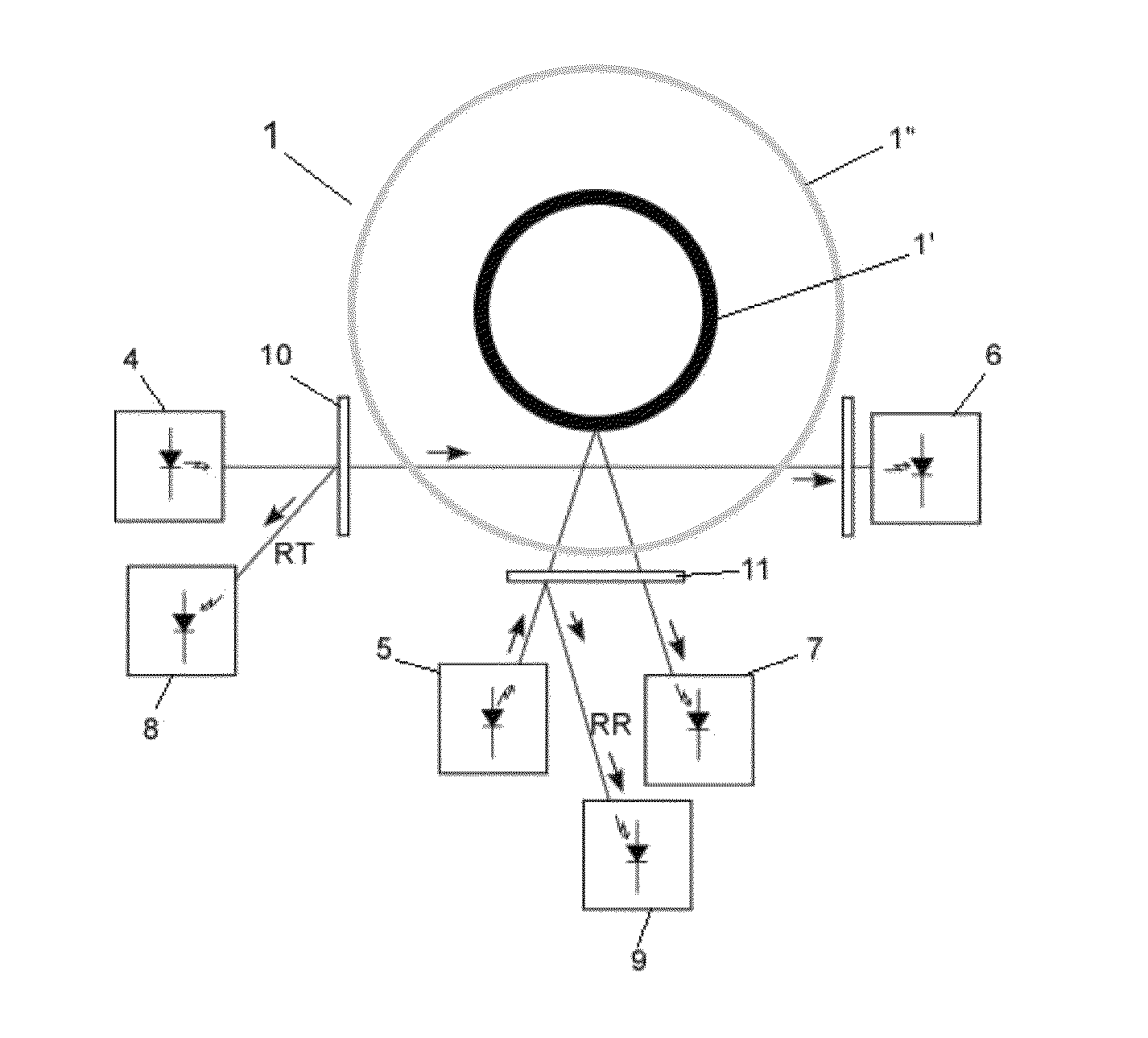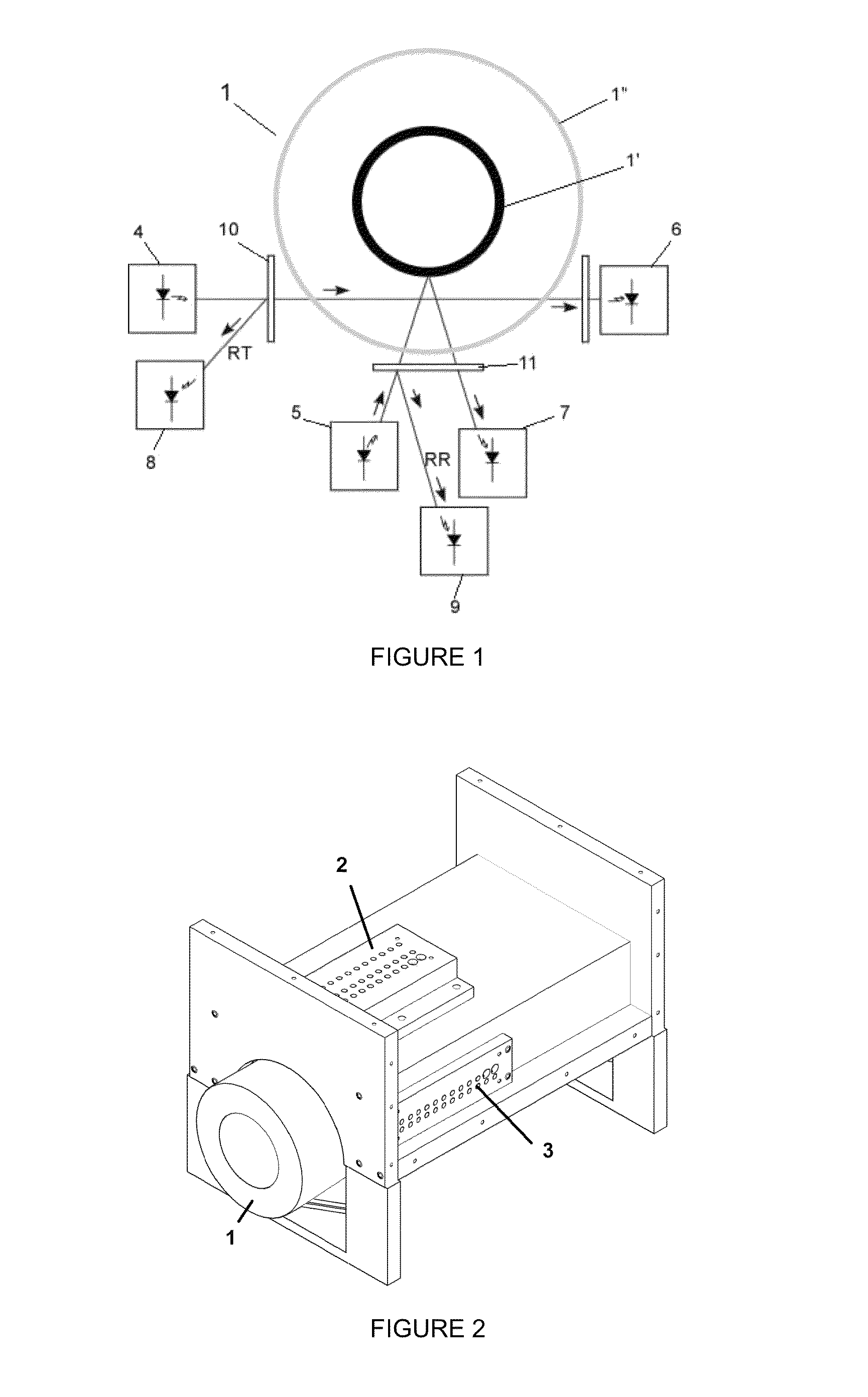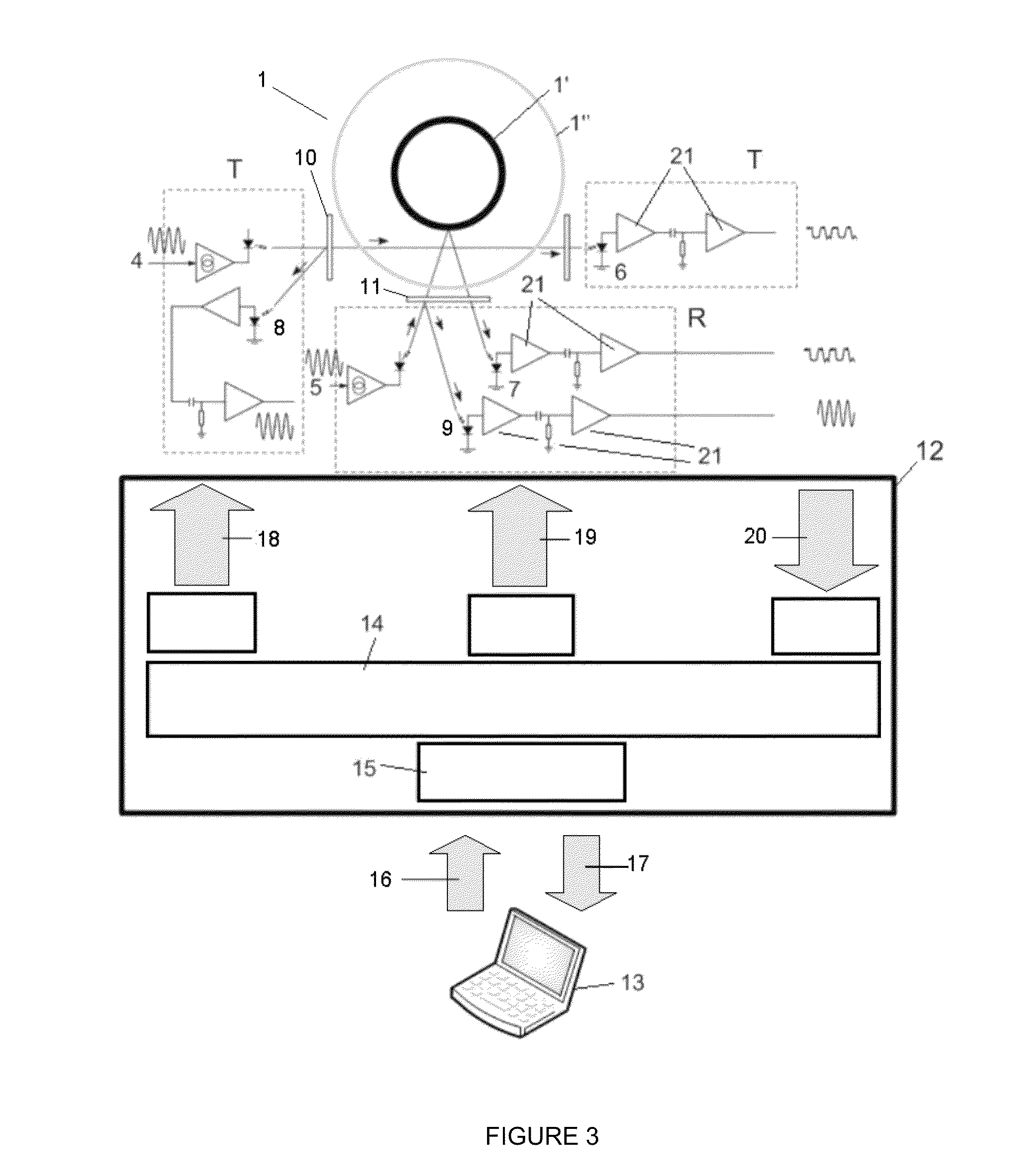Portable spectrophotometer and method for characterising solar collector tubes
a solar collector tube and spectrophotometer technology, applied in the field of optical measurement devices or instruments, can solve the problems of low dynamic measurement range system, inability to perform true spectral measurement, and more complex and delicate problems
- Summary
- Abstract
- Description
- Claims
- Application Information
AI Technical Summary
Benefits of technology
Problems solved by technology
Method used
Image
Examples
Embodiment Construction
[0014]The present invention takes into consideration the specific characteristics of the problem outlined above, with a design that meets requirements such as portability, speed measurement, adequate sensitivity and dynamic range.
[0015]In order to achieve a simple and robust system, glass lighting will be done through light emitting diodes (LEDs) covering the wavelength range in which the characterization is desired to be obtained. This allows having an inexpensive, high durability and stability light source. The existence of commercial LEDs with a large number of wavelengths within the range of 300 to 2500 nm (ultraviolet to near infrared) allows performing the spectral measurement with the desired resolution, by simply selecting the number of LEDs required in relation to the specific characteristics of each problem. With the usual requirements for spectral characterizing a solar thermal energy production facility, having about a dozen measuring wavelengths may be sufficient.
[0016]...
PUM
| Property | Measurement | Unit |
|---|---|---|
| wavelengths | aaaaa | aaaaa |
| wavelengths | aaaaa | aaaaa |
| wavelengths | aaaaa | aaaaa |
Abstract
Description
Claims
Application Information
 Login to View More
Login to View More - R&D
- Intellectual Property
- Life Sciences
- Materials
- Tech Scout
- Unparalleled Data Quality
- Higher Quality Content
- 60% Fewer Hallucinations
Browse by: Latest US Patents, China's latest patents, Technical Efficacy Thesaurus, Application Domain, Technology Topic, Popular Technical Reports.
© 2025 PatSnap. All rights reserved.Legal|Privacy policy|Modern Slavery Act Transparency Statement|Sitemap|About US| Contact US: help@patsnap.com



